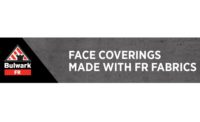Improve your safety culture with FR fabrics
Want to improve your safety culture? Try high-performance FR fabrics

The world’s top athletes wear high-performance fabrics to optimize their competitiveness and have better concentration on the task in front of them. Can high performance FR fabrics help your employees be safer, more focused and achieve a better safety culture?
Safety culture is the attitude, beliefs, perceptions and values that your employees share in relation to safety in the workplace. High performance fortifies strong safety cultures. In terms of FR fabrics, high performance is a term used to describe moisture wicking technology. These specialized fabrics have been around for more than 20 years. They were created to boost an athlete’s performance in extreme outdoor situations, keeping them drier and cooler in hot conditions and warmer drier in cold weather. The challenge is to understand the science behind the fabric, so it can be applied to workers – and benefit your safety culture.
Moisture wicking technology
Moisture wicking’s history started with a synthetic fiber (like polyester) with a chemical finish applied to allow moisture to spread. Eventually the finish would wash out and the fabric lost its wicking abilities. The tag on garments will reveal the blend of fibers. A blend of 100 percent of any fiber or a group of fibers that are 100 percent aramid, along with claims of moisture wicking, identifies the presence of a chemical finish.
Check to see if a manufacturer guarantees wicking for the life of the garment — chances are they don’t. Today the next generation of high-performance fabrics have a combination of hydrophobic, water-hating and hydrophilic, water-loving fibers. Examples of hydrophobic fibers include modacrylic, aramids and para-aramids, while hydrophilic fibers include rayon and lyocell.
The combination of these two fibers blended together ensure permanent moisture wicking for the life of the garment. The big question then becomes: what is the optimal blend of these two fibers that creates a soft hand while performing the best?
Balancing the blend
Blends of these fibers range from 90 percent/10 percent (90 percent hydrophobic, 10 percent hydrophilic) to 55/45. Data has proven that the optimal blend is when both numbers are closer together, which is 55/45. This allows for better face (skin side) pick up and transport. If you don’t have enough hydrophilic fiber the fabric won’t absorb well, and if you don’t have enough hydrophobic the fabric will not push the moisture to the front as well. It is the balance of the blend that creates a high performance product.
High-performance fabrics have a few key characteristics. Vertical wicking is how fast and far moisture spreads. Back to front moisture transport rate is critical in keeping clothes drier longer with less chance of heat rash. This also allows more heat to escape your body, helping thermo-regulation and preventing heat stress.
Water Vapor Transmission Rate, or “WVTR” is about the breathability of the fabric. This was created by fabric designers to compare and quantify just how breathable fabrics are today. Each of these factors are extremely important and none more important than another. Determining what the better high-performance fabric is can’t be based on one of these factors alone.
Layering is another important concept of high-performance fabrics. It allows you to wear lighter weight garments while keeping out the elements. This in turn keeps the body drier, cooler and or warmer depending on the conditions.
As mentioned above the “WVTR” is critical to know for mid layers, sweat shirts and outerwear as this becomes the transfer of moisture from fabric to fabric. The higher the “WVTR,” the more moisture is spreading to the next garment. Functionality and mobility also increase as weight of fabric decreases.
Looking for a reprint of this article?
From high-res PDFs to custom plaques, order your copy today!




